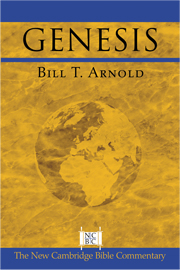Book contents
- Frontmatter
- Contents
- List of Supplementary Sections
- Preface
- A Word about Citations
- Abbreviations
- I INTRODUCTION
- II SUGGESTED READINGS ON GENESIS
- III COMMENTARY PART ONE: THE PRIMEVAL HISTORY – GENESIS 1–11
- IV COMMENTARY PART TWO: ANCESTRAL NARRATIVES – GENESIS 12–50
- Scripture Index
- Extrabiblical Texts Index
- Author Index
- Subject Index
- References
IV - COMMENTARY PART TWO: ANCESTRAL NARRATIVES – GENESIS 12–50
Published online by Cambridge University Press: 05 June 2014
- Frontmatter
- Contents
- List of Supplementary Sections
- Preface
- A Word about Citations
- Abbreviations
- I INTRODUCTION
- II SUGGESTED READINGS ON GENESIS
- III COMMENTARY PART ONE: THE PRIMEVAL HISTORY – GENESIS 1–11
- IV COMMENTARY PART TWO: ANCESTRAL NARRATIVES – GENESIS 12–50
- Scripture Index
- Extrabiblical Texts Index
- Author Index
- Subject Index
- References
Summary
GENESIS 11:27–12:9 CALL OF ABRAM
(11:27) Now these are the descendants of Terah. Terah was the father of Abram, Nahor, and Haran; and Haran was the father of Lot.
(11:28) Haran died before his father Terah in the land of his birth, in Ur of the Chaldeans.
(11:29) Abram and Nahor took wives; the name of Abram's wife was Sarai, and the name of Nahor's wife was Milcah. She was the daughter of Haran the father of Milcah and Iscah.
(11:30) Now Sarai was barren; she had no child.
(11:31) Terah took his son Abram and his grandson Lot son of Haran, and his daughter-in-law Sarai, his son Abram's wife, and they went out together from Ur of the Chaldeans to go into the land of Canaan; but when they came to Haran, they settled there.
(11:32) The days of Terah were two hundred five years; and Terah died in Haran.
(12:1) Now the LORD said to Abram, “Go from your country and your kindred and your father's house to the land that I will show you.
(12:2) I will make of you a great nation, and I will bless you, and make your name great, so that you will be a blessing.
(12:3) I will bless those who bless you, and the one who curses you I will curse; and in you all the families of the earth shall be blessed.”
[…]
- Type
- Chapter
- Information
- Genesis , pp. 125 - 390Publisher: Cambridge University PressPrint publication year: 2008



